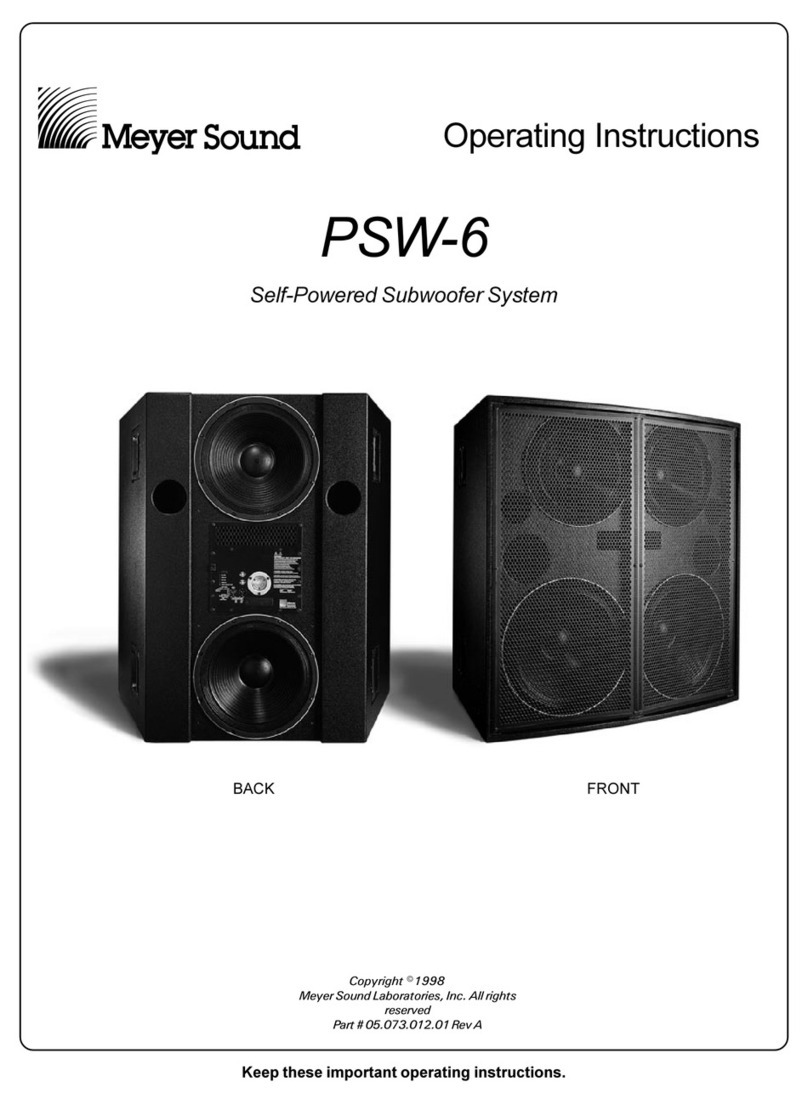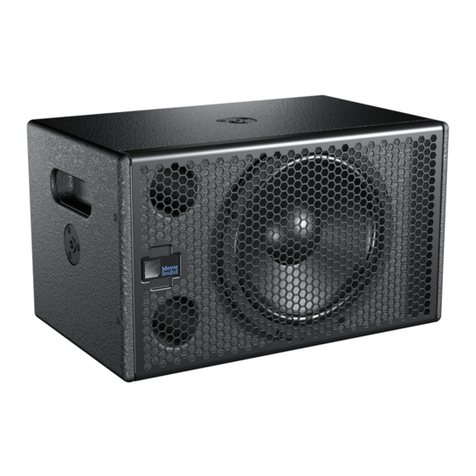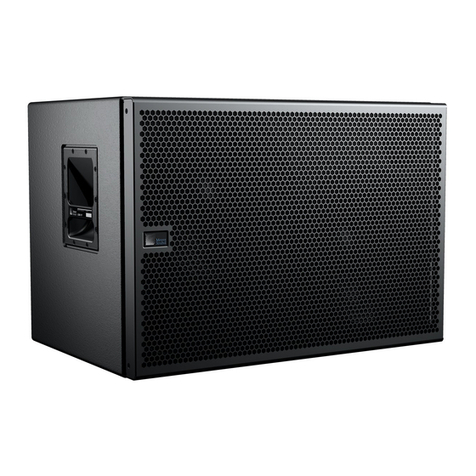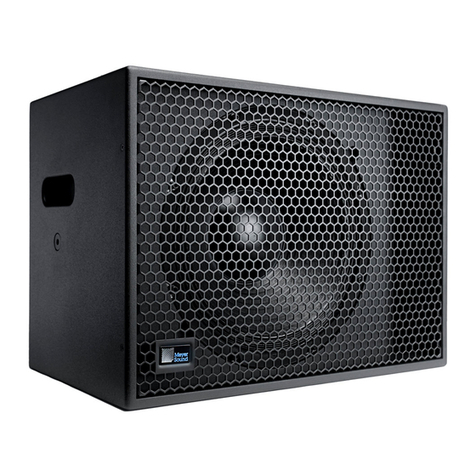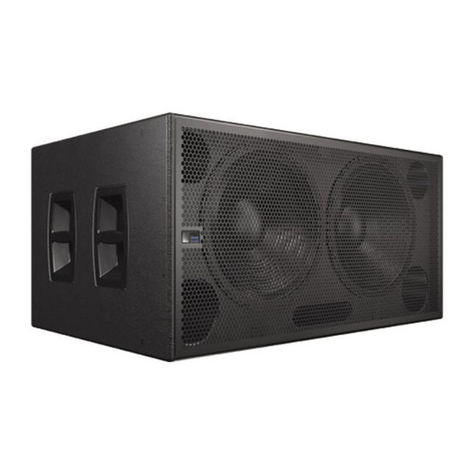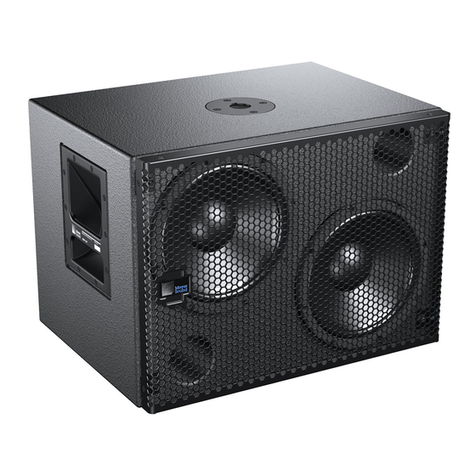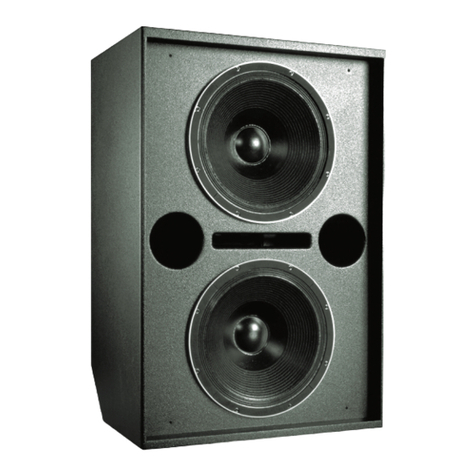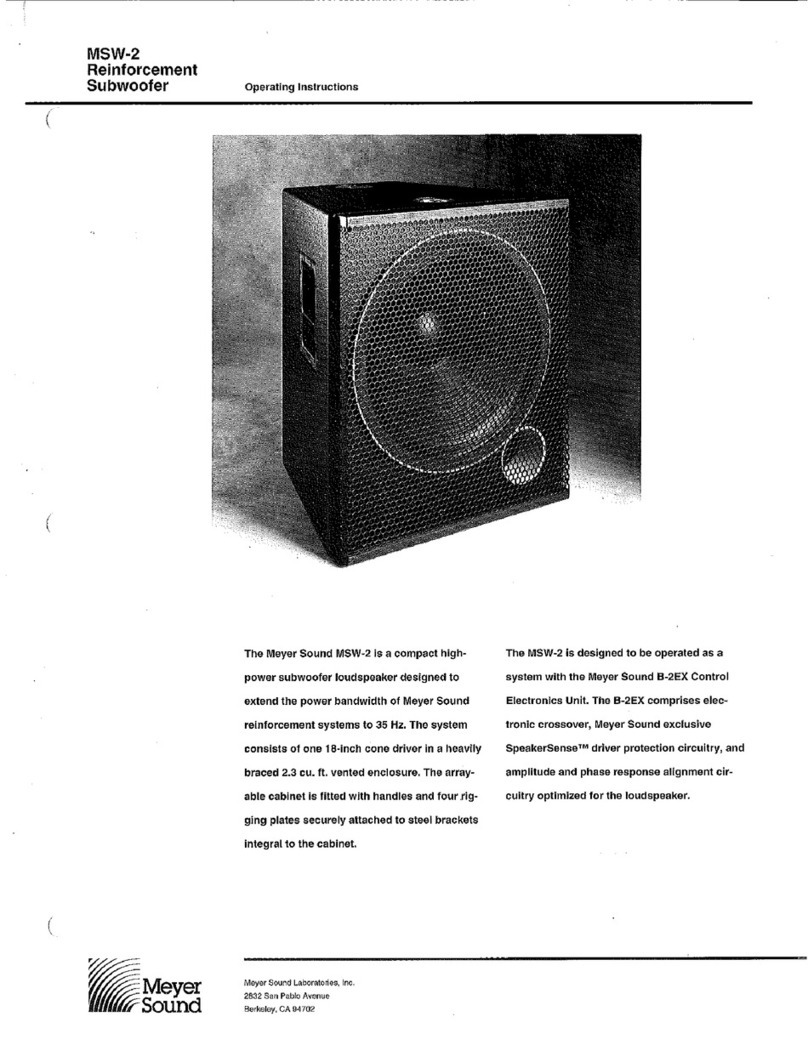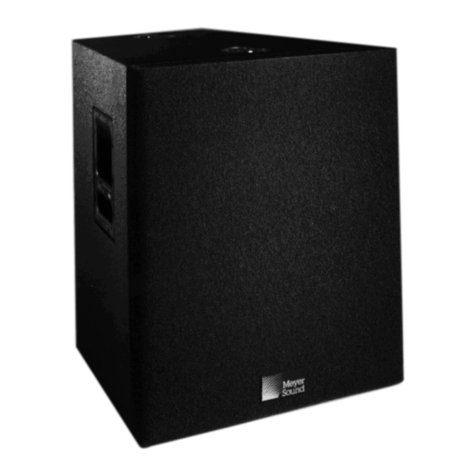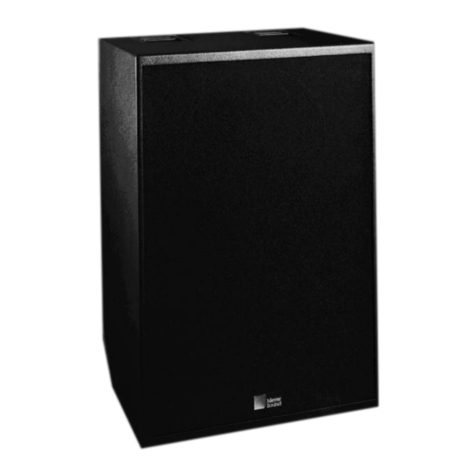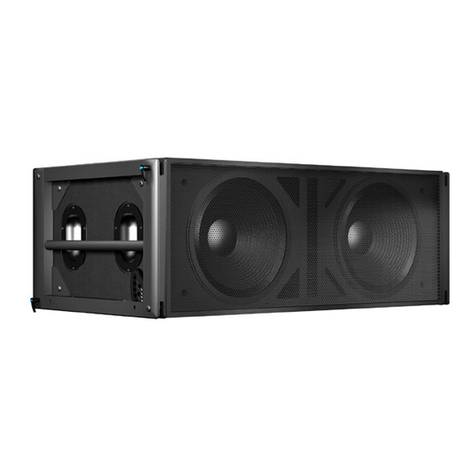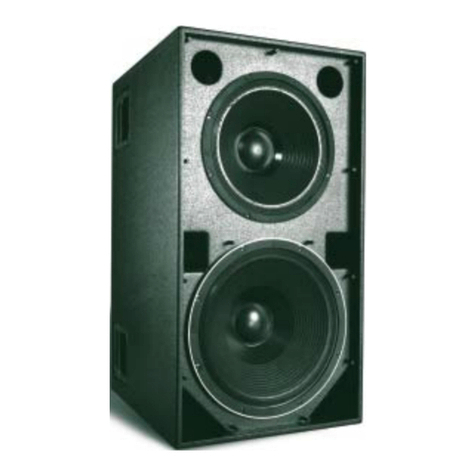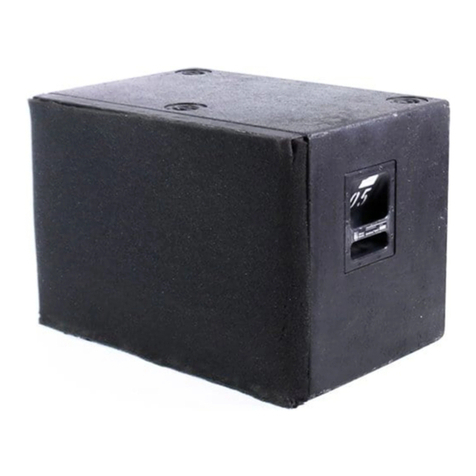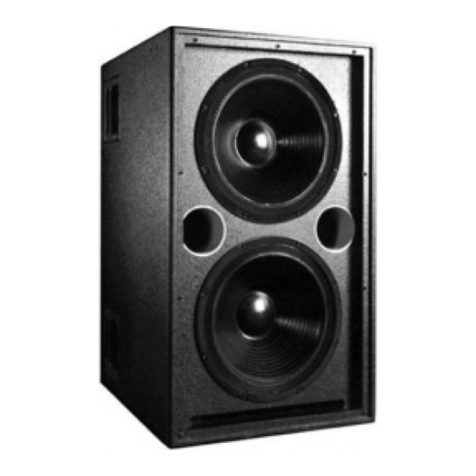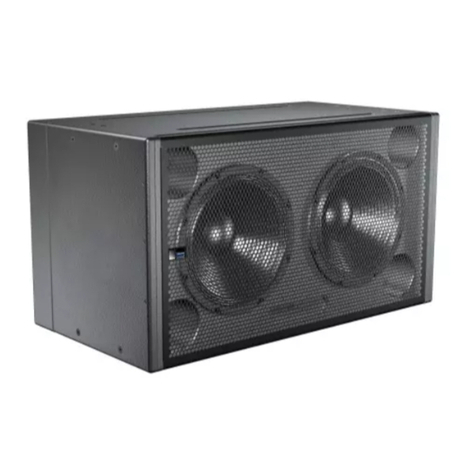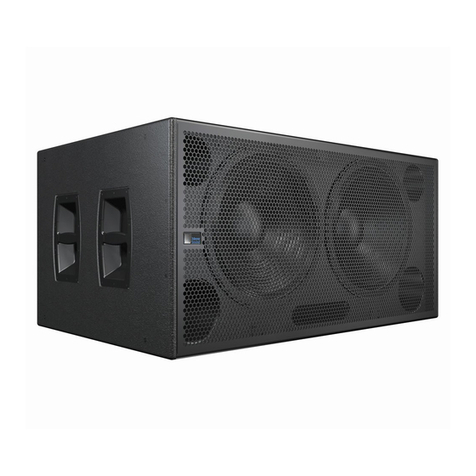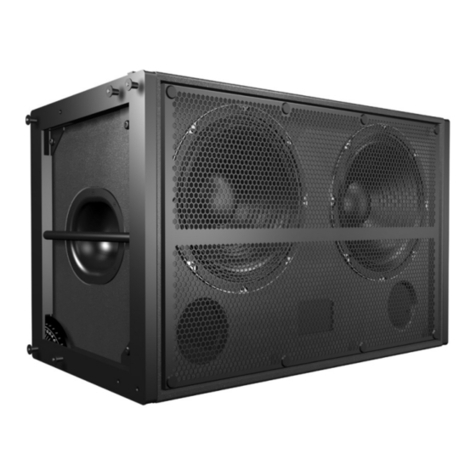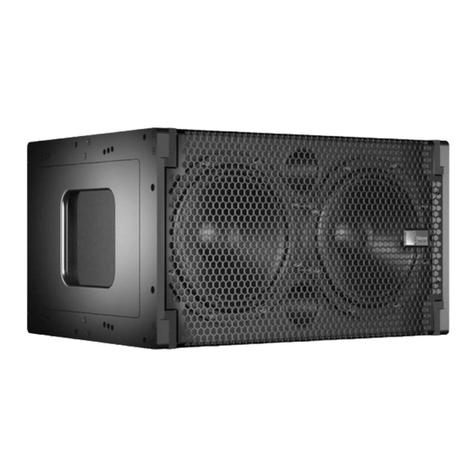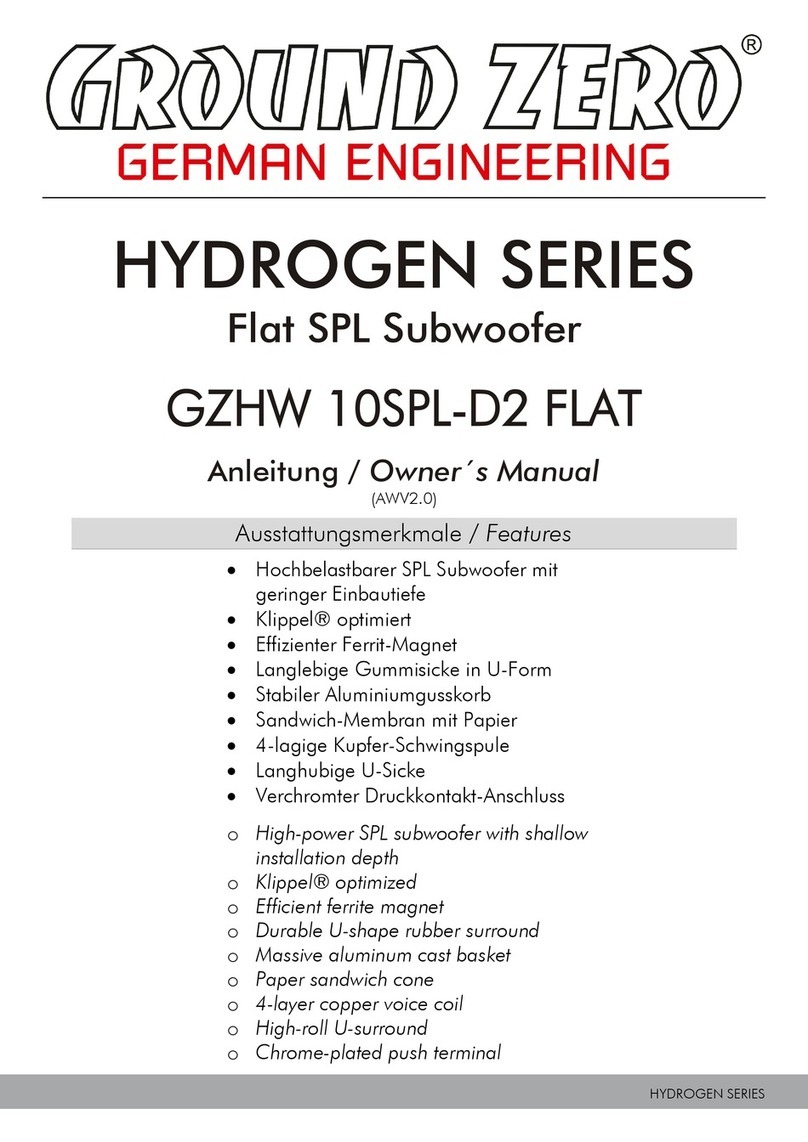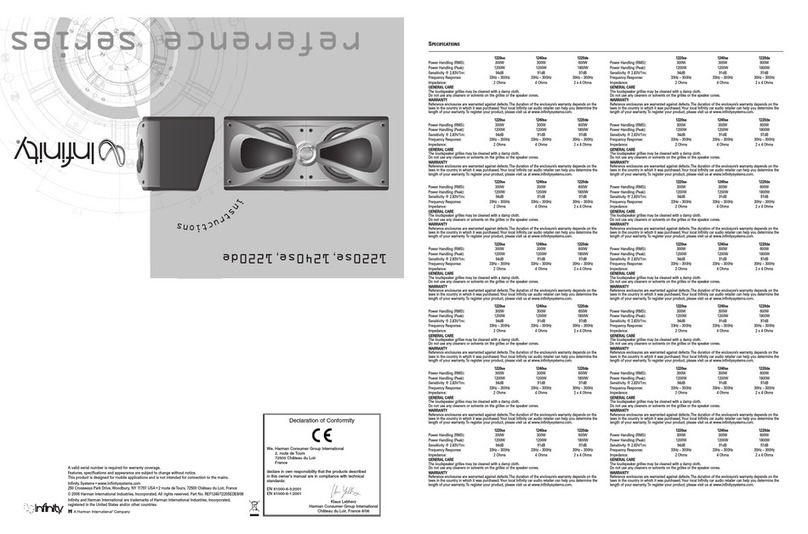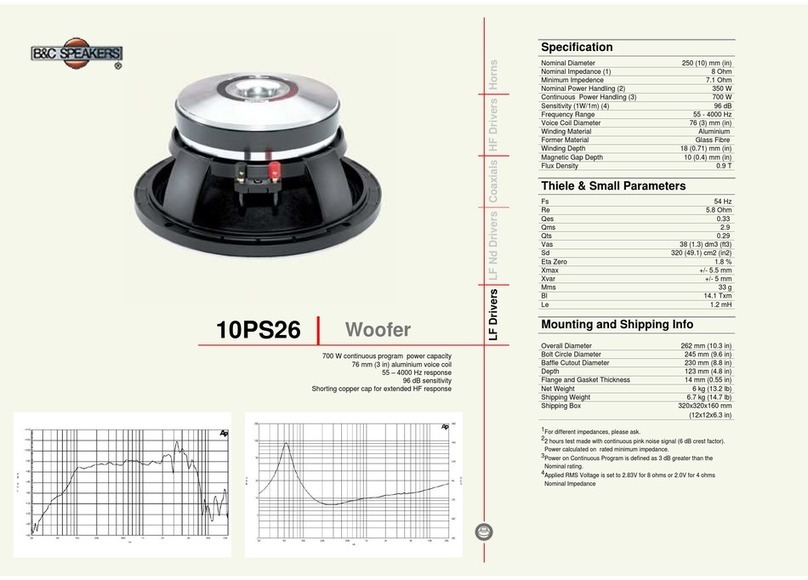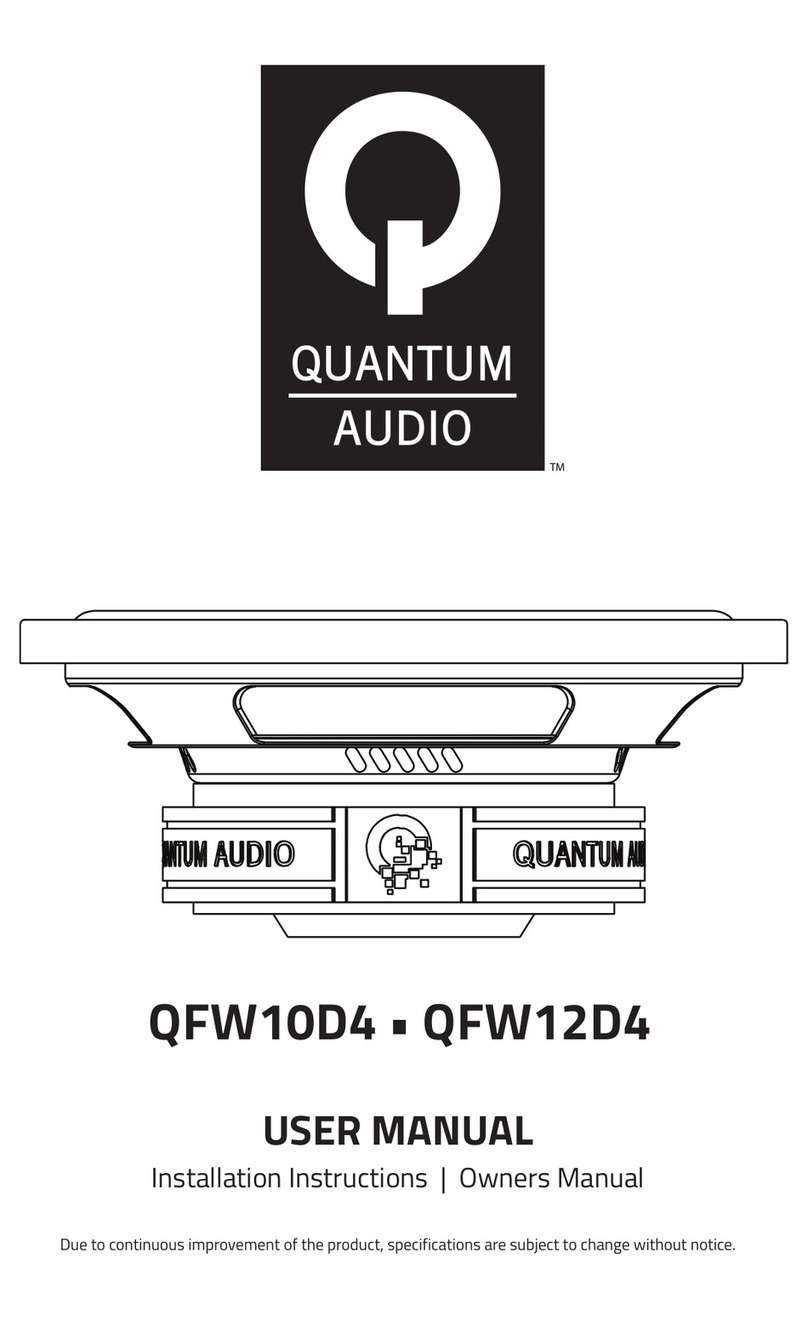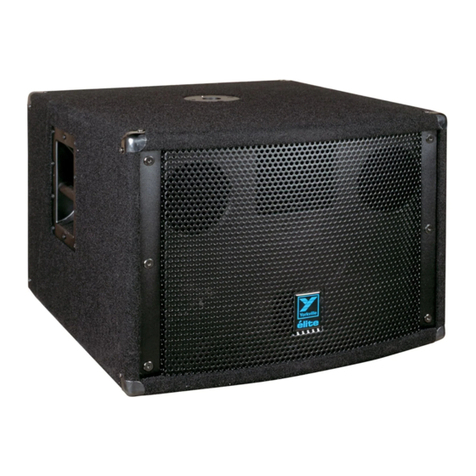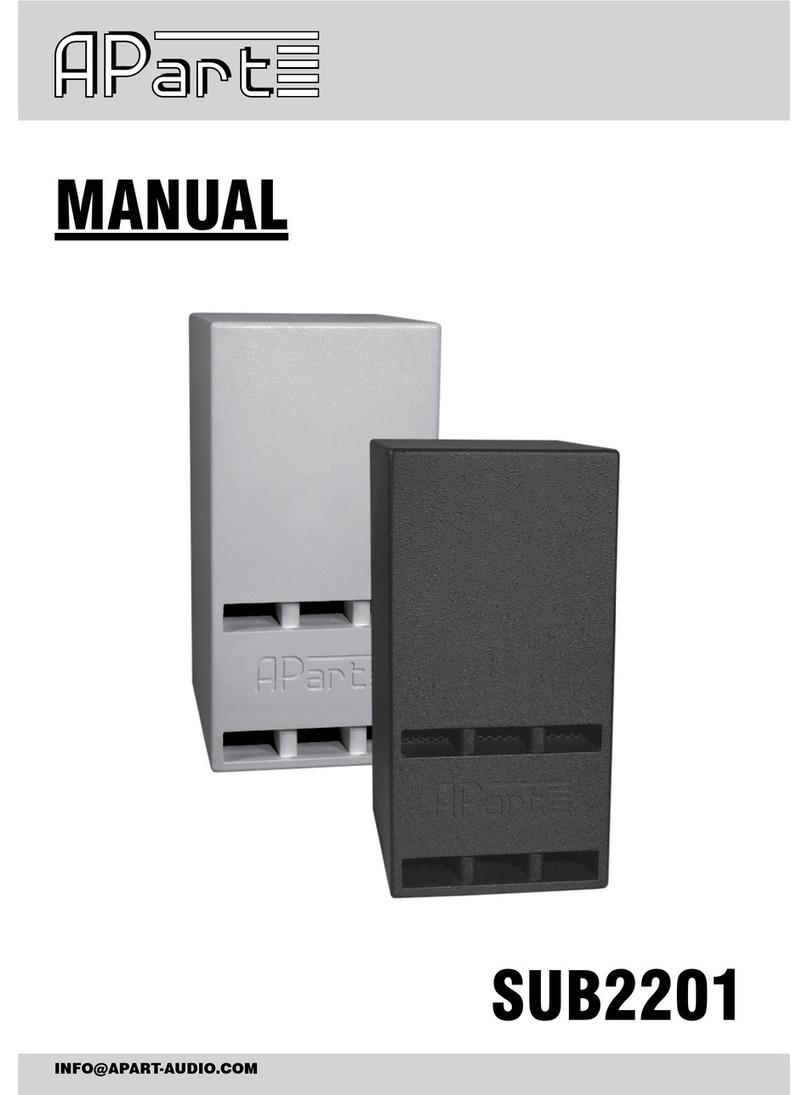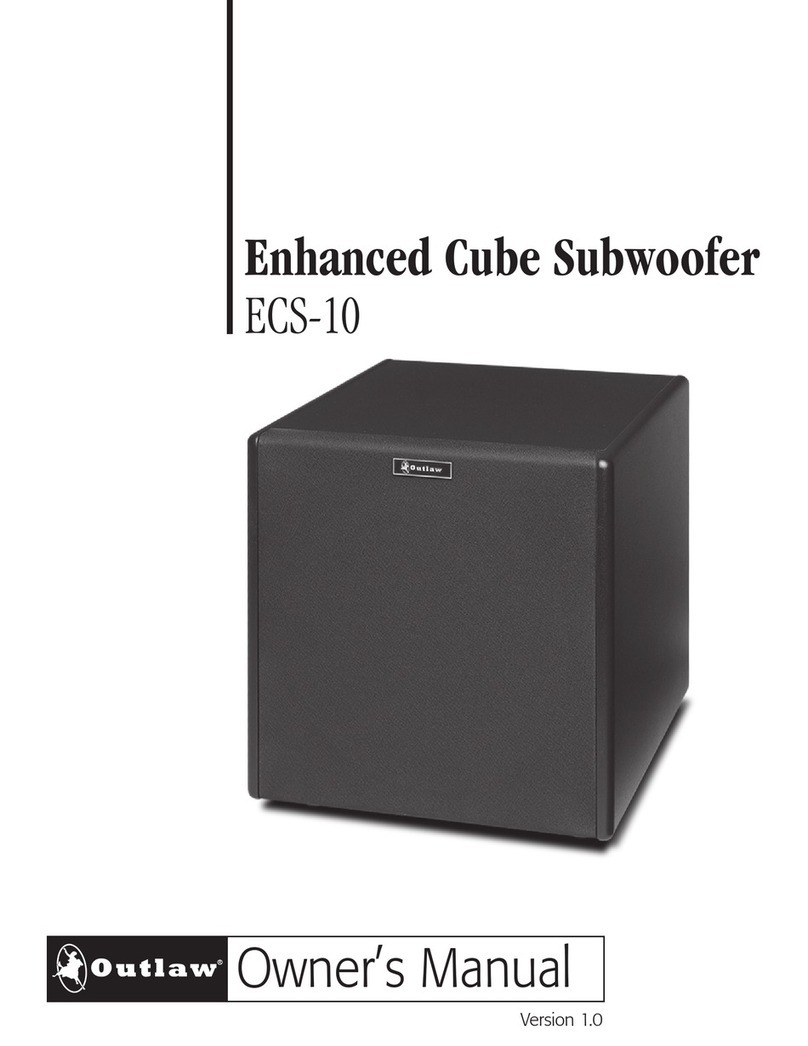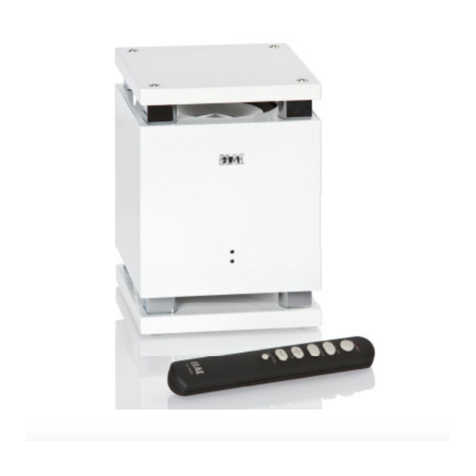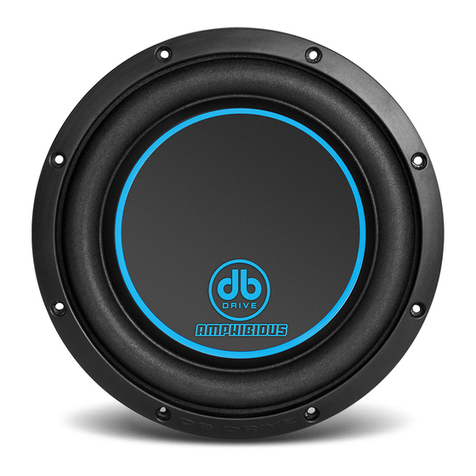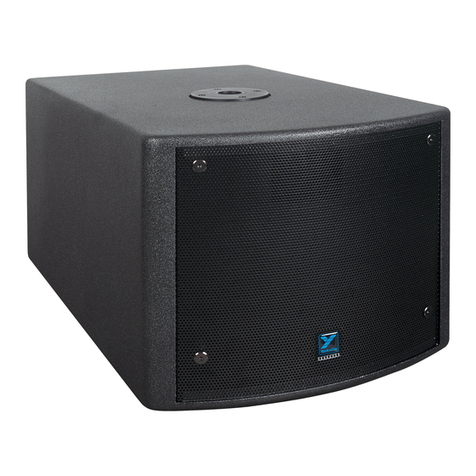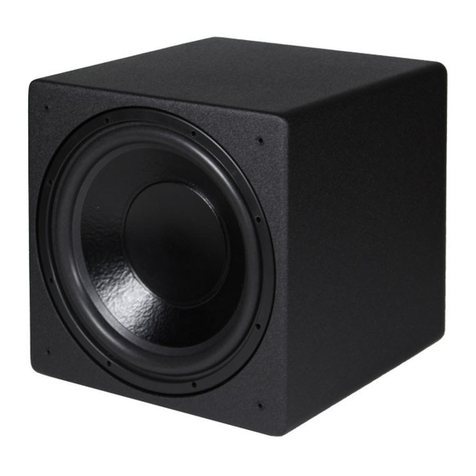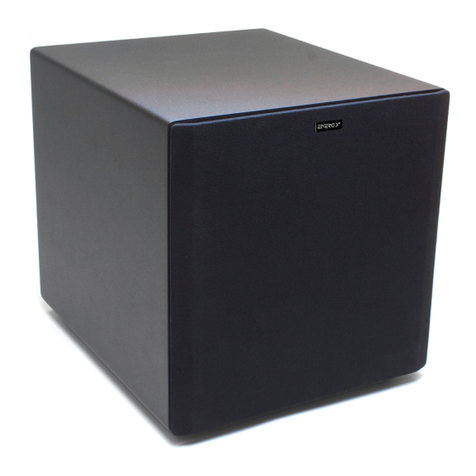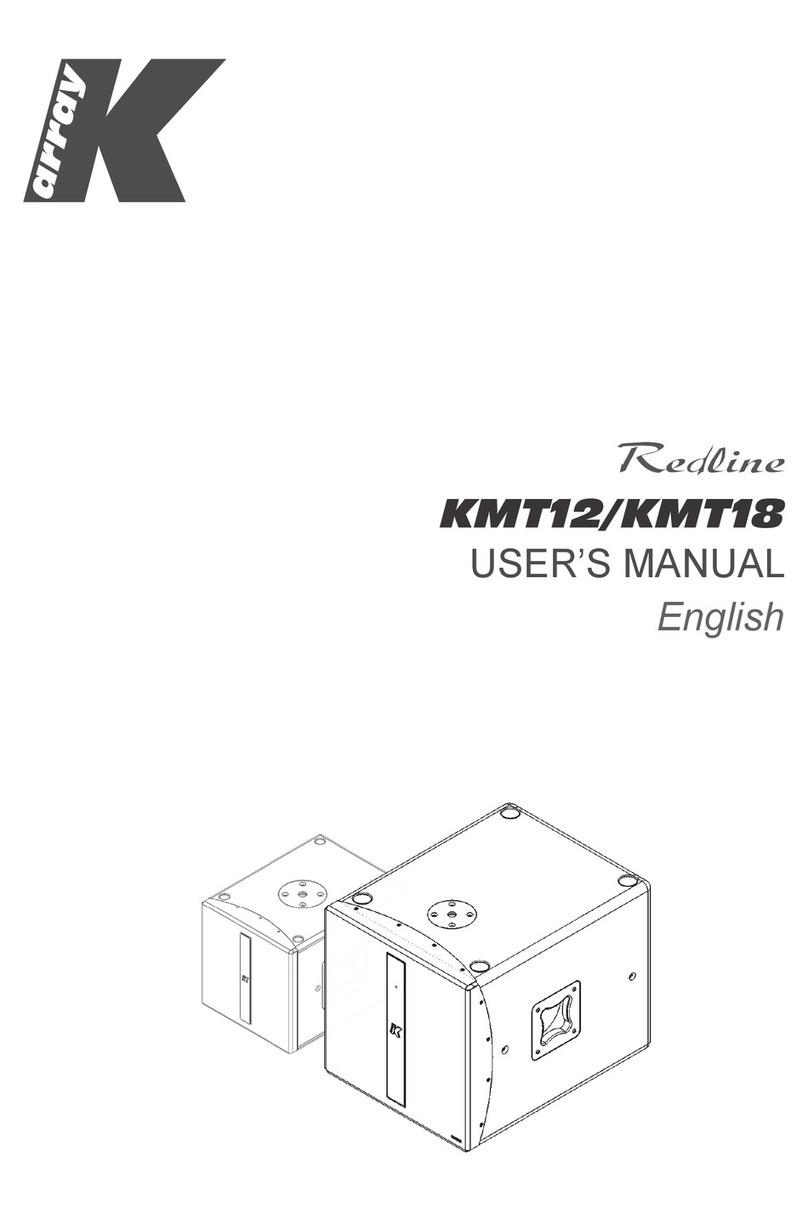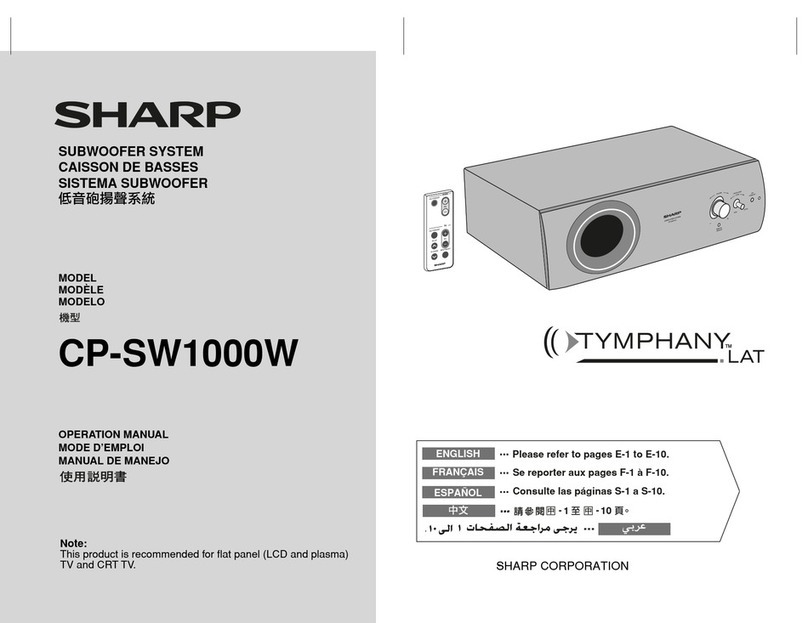
UMS-1P specifications
1. Recommended maximum operating
frequency range. Response depends on
loading conditions and room acoustics.
2. Free field, measured with 1/3-octave
frequency resolution at 4 meters.
3. Measured with music at 1 meter.
4. Power handling is measured under AES
standard conditions: transducer driven
continuously for two hours with band-
limited noise signal having a
6 dB peak-average ratio.
5. Two additional input module options
are available with a polarity reversal
switch and an attenuator (0 dB to
-18 dB): one looping and one with two
inputs for mono summing.
6. Amplifier wattage rating based on the
maximum unclipped burst sine-wave
rms voltage the amplifier will produce
into the nominal load impedance. Each
channel 30 V rms (42 V pk) into 4 ohms.
7. 100 V AC version, range 90 - 100 V AC;
recommended maximum 115 V AC.
8. Fuse-protected above 135 V AC (115 V
AC switch position) and 265 V AC (230
V AC switch position).
9. Current drawing for a single
loudspeaker. Loop out not used.
architect specifications
meyer sound laboratories inc.
2832 San Pablo Avenue
Berkeley, CA 94702
T: +1 510 486.1166
F: +1 510 486.8356
techsupport@meyersound.com
www.meyersound.com
UMS-1P - 04.086.010.01 B
Copyright © 2005
Meyer Sound Laboratories Inc.
All rights reserved
Operating Frequency Range1
Frequency Response2
Phase Response
Maximum Peak SPL3
Dynamic Range
Low Frequency
Type
Maximum Common Mode Range
Connectors
Input Impedance
Wiring
DC Blocking
CMRR
RF Filter
TIM Filter
Nominal Input Sensitivity
Input Level
Type
Output Power6
THD, IM, TIM
Load Capacity
Cooling
Connector
Voltage Selection
Operating Voltage Ranges
Current Draw
9:
Idle Current
Max Long-Term Continuous Current (>10 sec)
Burst Current (<1 sec)
Ultimate Short-Term Peak Current Draw
Inrush Current
25 Hz - 160 Hz
29 Hz - 135 Hz ±4 dB
41 Hz - 155 Hz ±30°
127 dB
>110 dB
360° single unit; varies for multiple units, depending on number and
configuration
Two 10" cone drivers
Nominal impedance: 4 Ω
Voice coil size: 2"
Power-handling capability: 400 W4
Differential, electronically balanced
±15 V DC, clamped to earth for voltage transient protection
Female XLR input with male XLR loop output
10 kΩ differential between pin 2 & 3
Pin 1: Chassis/earth through 220 kΩ, 1000 pF, 15 V clamp network to
provide virtual ground lift at audiofrequencies
Pin 2: Signal +
Pin 3: Signal - (optional polarity reversal switch)5
Case: Earth ground and chassis
Differential DC blocking up to max common mode voltage
>50 dB, Typically 80 dB (50 Hz - 500 Hz)
Common Mode: 425 kHz; Differential Mode: 142 kHz
<80 kHz, integral to signal processing
0 dBV (1 V rms, 1.4 V pk) continuous is typically the onset of limiting
for pink noise and music
Audio source must be capable of producing a minimum of +20 dBV
(10 V rms, 14 V pk) into 600 Ω in order to produce maximum peak
SPL over the operating bandwidth of the loudspeaker
Two-channel complementary MOSFET output stages (class AB/
bridged)
450 W total
<.02 %
4 Ω both channels
Convection
PowerCon with looping output
External 115/230 V AC switch (100 V AC version available)7
105 V AC - 130 V AC (115 V AC); 210 V AC - 260 V AC (230 V AC)8
.0.13 A rms (115 V AC); 0.065 A rms (230 V AC); 0.15 A rms (100 V AC)
1 A rms (115 V AC); 0.5 A rms (230 V AC); 1.2 A rms (100 V AC)
1.3 A rms (115 V AC); 0.65 A rms (230 V AC); 1.5 A rms (100 V AC)
2.9 A pk (115 V AC); 2 A pk (230 V AC); 3.3 A pk (100 V AC)
18 A pk (115 V AC); 12 A pk (230 V AC); 15 A pk (100 V AC)
Equipped for two-conductor, twisted-pair network, reporting
amplifier operating parameters to system operator’s host computer.
The loudspeaker shall be a self-powered, sub-bass system able
to be used singly or ground-stacked in multiples. The transducers
shall consist of two 10-inch cone drivers with 2-inch voice coils,
each rated to handle 400 AES* watts.
The loudspeaker shall incorporate internal processing electron-
ics and a two-channel amplifier. Each amplifier channel shall be
class AB/bridged with complementary MOSFET output stages.
Burst capability shall be 450 watts total with a nominal resistive
load of 4 ohms both channels. Distortion (THD, IM, TIM) shall not
exceed 0.02%.
Performance specifications for a typical production unit shall
be as follows: Operating frequency range shall be 25 Hz to 160
Hz. Phase response shall be ±30 degrees from 41 Hz to 155 Hz.
Maximum peak SPL shall be 127 dB at 1 meter. Beamwidth shall be
360 degrees for a single unit. Directional characteristics can be
achieved with multiple cabinets.
Notes:
The audio input shall be electronically balanced with a 10 kOhm
impedance and accept a nominal 0 dBV (1 V rms, 1.4 V pk) signal
(+20 dBV to produce maximum peak SPL). Connectors shall be
XLR (A-3) type male and female. RF filtering shall be provided.
CMRR shall be greater than 50 dB (typically 80 dB, 50 Hz to 500
Hz). Two additional input module options shall be offered with
an attenuator and polarity reversal switch; one with loop-through
output, and another with two summing inputs instead of the loop-
through input and output.
Two versions of the loudspeaker shall be available: a switchable
115/230 V and a non-switchable 100 V version. The voltage
selection needs to be manually selected. The internal power
supply shall perform EMI filtering, soft current turn-on and surge
suppression. Powering requirements shall be nominal 100 (100 V
version) and 110 or 230 V AC (115/230 version) line current at 50
or 60 Hz. UL and CE operating voltage range shall be 115 V AC
- 240 V AC. Ultimate short-term peak current draw shall be 2.9
A at 115 V AC, 2 A at 230 V AC and 3.3 A at 100 V AC. Current
inrush during turn-on shall not exceed 18 A at 115 V AC. AC
power connectors shall be PowerCon with looping output. The
loudspeaker system shall provide facilities for installing the
optional RMS remote monitoring system.
All loudspeaker components shall be mounted in an acoustically
vented rectangular enclosure constructed of premium birch
plywood with a black textured finish. The front protective
grille shall be powder-coated hex-stamped steel covered by
charcoal-gray foam. Dimensions shall be 22.75" wide x 16.30"
high x 17.51" deep (16" without grille) (578 mm x 414 mm x 445
mm; 406 mm without grille). Weight shall be 62 lbs (28.10 kg).
A pole mount for supporting a UPM-1P or UPM-2P shall be
fitted as standard.
The loudspeaker shall be the Meyer Sound UMS-1P.
*Driven continuously for two hours with band-limited noise
signal having a 6 dB peak-average ratio.
European Office:
Meyer Sound Lab. GmbH
Carl Zeiss Strasse 13
56751 Polch, Germany
Made by Meyer Sound Laboratories
Berkeley, California USA
Acoustical
Coverage
Transducers
Audio Input
Amplifier
AC Power
RMS Network (Optional)
